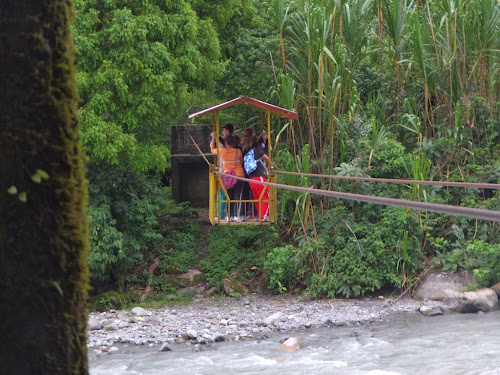Another week in Veracruz has come and gone without too much fanfare. It was a quiet week at the school with only 3 students, and I decided to take advantage of the vast library to study on my own. And with a lightning fast internet connection I was able to catch up on all the highlights of a very enjoyable football Sunday.
I did continue my culinary education and learned how to make a number of delectable treats. Empanadas are a typical Mexican snack eaten in the morning or afternoon, but unlike in Bolivia you can find them just about any time of day. You probably have encountered some version of the empanada sometime in your comestible adventures, but here is how to make one Mexican style. For those unfortunate souls who have voluntarily regressed along the evolutionary spectrum, this version does not have meat.
First step, acquire the ingredients. We only need two for empanadas de queso: dough and cheese, and both can be found at the local tortillera.
The dough is actually produced offsite by farmers who receive some government subsidies to keep prices low. That is great for us at the school, but unfortunately the recipe is not widely known anymore and is aledgedly difficult to reproduce. I will have to count on a member of the Mexican population north of the border to have retained this national secret... I hear there might be a few in California.
Take a look at the menu and order your two ingredients, Maza and Queso Fresco. For reference, $1 is 13 pesos.
Once you have ordered, the dough is weighed, bagged, and you can be on your way.
Now you have your ingredients, its time to make the tortillas. Take a handfull of dough, ball it into a circle, and lightly slap it onto the middle of your circular plastic cut-out. Slowly spin the plastic circle with one hand while applying pressure to the outside of the dough with the heel of your other hand and watch your tortilla grow! This sorry excuse for a tortilla took me about 45 seconds to spin and required some emergency resuscitation from the master chef; it took her about 10 seconds to crush hers. But this is how we learn, and the good news is that even the ugly ones taste good.
Once you have your tortilla, time to add the cheese. The cheese comes in a large block but is very easy to string, a job that I most dutifully carried out.
Now its time to fold. Here's where the plastic comes in handy again, all you have to do is take hold of one side and match it together. Apply a little pressure, remove the plastic, and your empanada is ready for the frying pan (apologies for the blurry picture on this one).
Scoop that bad boy up with a spatula and place it into a frying pan generously filled with oil. Cook until things look crispy (about a minute) and try not to burn yourself as you take your delectable snack out of the pan. ¡Provecho!

















































